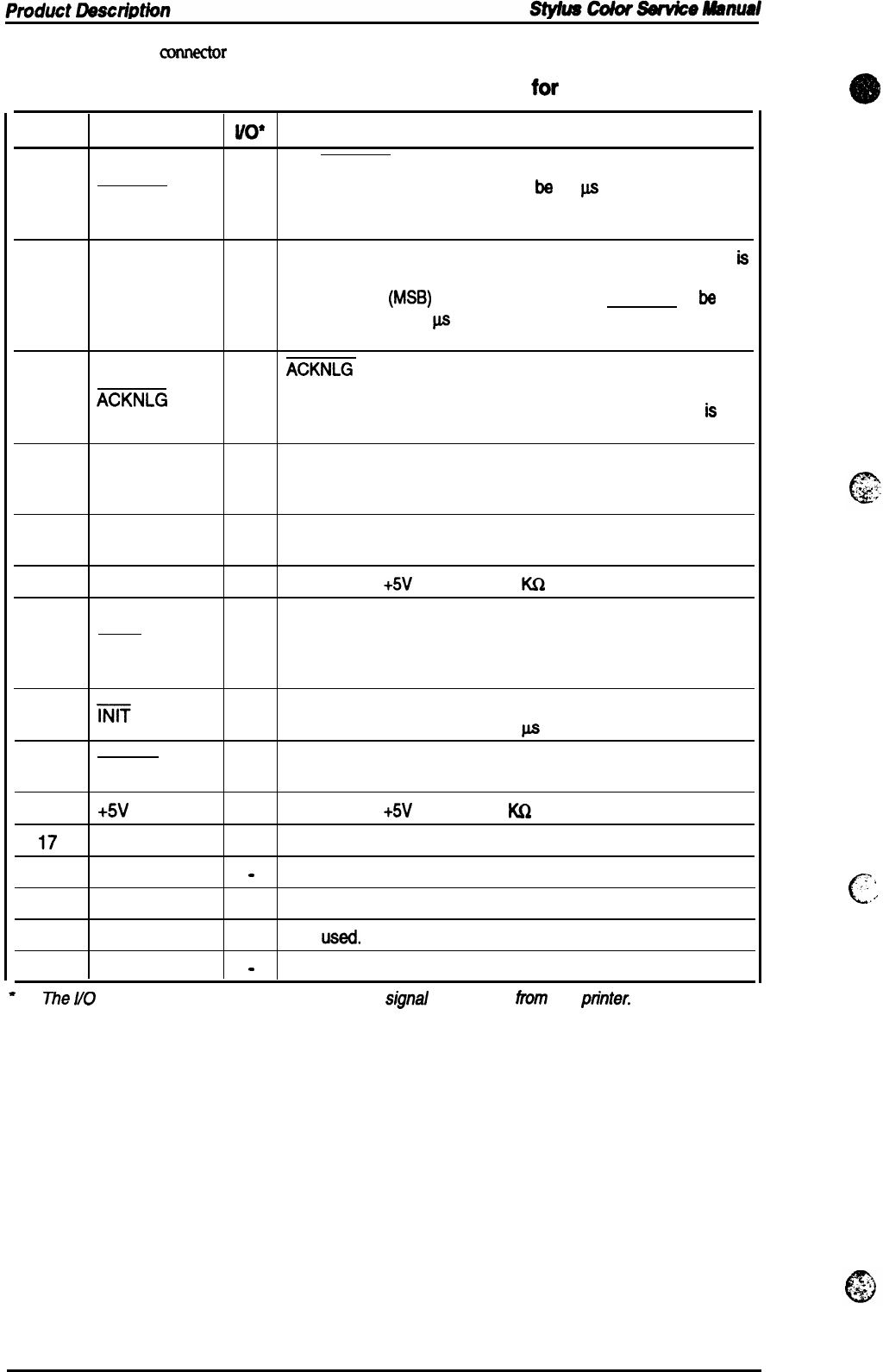
Table 1-9 shows the
co
nm@or
pin assignments and signal functions
of the
8-bit parallel interface.
Table 1-9. Signal and Connector Pin Assignments
for
Parallel Interface
Pin No.
Signal Name
I/o’
Description
The
STROBE pulse is used to read data from the host
1
STROBE
I
computer. The pulse
width must
be
0.5
~
or more.
Normally,
it is
HIGH, and data is latched with the rising edge of this
signal.
DATA 1-8 are parallel data
bits. When one of these signals
is
HIGH, the data bit is 1; when LOW, the data bit is O. The most
2-9 DATA 1-8
I
significant bit
(MSB)
is
DATA 8. The signal state must
be
maintained
for 0.5
ps
on either side of the STROBE signal’s
active edge.
ACKNLG
is an acknowledge pulse with a width of
10
ACKNLG
o
approximately 10 p.s. This signal goes LOW upon the
completion of data reception to indicate that the printer
is
ready to receive further
data.
The BUSY signal informs the host computer of the printer’s
11
BUSY
o
status. When this signal is HIGH, the printer cannot accept
any more data.
12
PE
o
This signal indicates whether paper is available in the printer
or not. A HIGH level indicates no paper.
13
SLCT
o
Pulled up to
+5V
through a 1.0
KQ
resistor in the printer.
If this signal is set to LOW, the printer automatically performs
14
AFXT
I
one line feed upon receipt of
a
CR (carriage return) code. The
status of this signal is checked onty at power on and
initialization.
31
m
I
If this signal goes LOW, the printer is initialized. The pulse
width of this signal must be 50
@ or more.
32
ERROR
o
This signal goes LOW if the printer has a fatal error or runs
out of paper.
35
+5V
Pulled up to
+5V
through 1.0
KQ
resistor in the printer.
17
CHASSIS
-
Chassis ground.
16
GND
-
Signal ground.
19-30
-
.
.
33,36
-
.
Not
USed.
15,18,34
-
-
—
c
.
.
,.
2
*
7he
//0
column indicates the direction of the
signal
as viewed
hm
the
printe~
1-1o
Rev. A


















